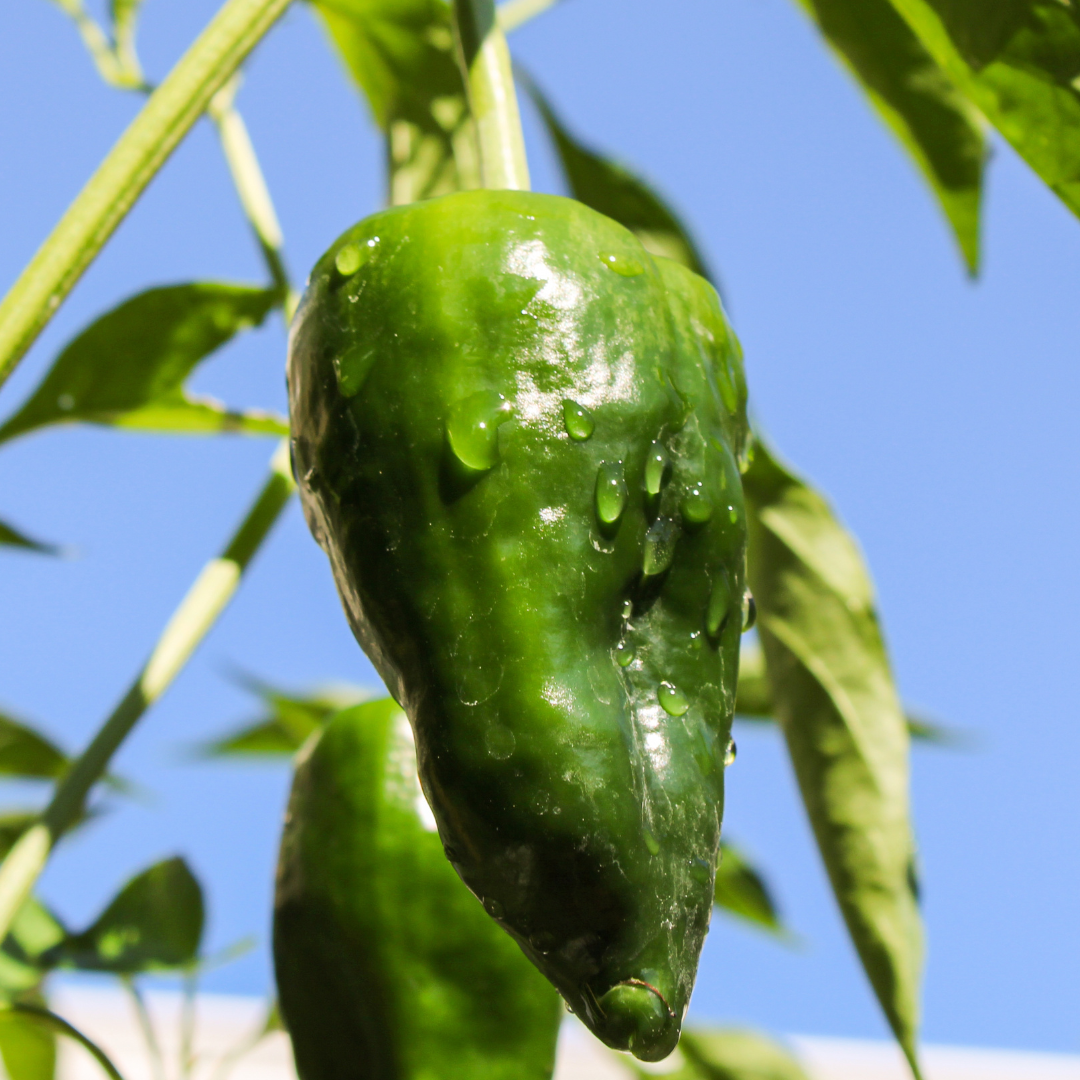Baron Poblano Pepper Seed
Baron Poblano Pepper Seed
Couldn't load pickup availability
Seed Type
Seed Type
F1 Hybrid (Untreated)
Seeds Per Pack
Seeds Per Pack
12
Days to Maturity
Days to Maturity
65
Disease Resistance
Disease Resistance

Why Grow Baron Poblano Pepper?
Huge Peppers for Stuffing Baron Poblano Pepper plants grow huge poblano peppers, averaging 7.5" tall by 3" wide. These large poblanos are perfect for stuffing and making everyone's favorite -- chile rellenos! Baron poblano peppers have a medium heat that is more substantial than a banana pepper, but less than that of a jalapeño. In addition to stuffing, these large poblano peppers are also great for roasting or drying into your own homemade pepper flakes.
Vigorous, Productive Plants Baron poblano peppers have tall, strong plants that are widely adapted to wide range of growing conditions. Although the plants are strong and tall, we recommend staking or trellising the plants for best results. With proper fertilization, these peppers will grow and keep producing through the toughest of summers.
Baron Poblano Pepper Growing Tips
• When to Plant Peppers
Peppers are a "warm season" vegetable that should be transplanted in the garden once the risk of frost has passed in the early spring months. Start the seeds in a greenhouse or seed starting room 6-8 weeks before your intended in-ground planting date.
Compared to other vegetables, pepper seeds will take longer to germinate. It's not unusual for pepper seeds to take 7-10 days to germinate. Hotter peppers can take even longer. Be patient and keep your seed starting mix moist and the soil temperatures consistently warm. A heat mat is your best friend when germinating pepper seeds.
Once you have pepper seedlings with a well-developed root ball, give each pepper plant approximately 2' or more of space in your garden. Planting them close and allowing the plants to lean on one another helps support the plants as they grow. You can use cages or a Florida Weave trellis to support the plants as they develop fruits.
To learn how to use the Florida Weave trellis, watch this video.
• How to Fertilize Peppers
It's always a good idea to apply some pre-plant fertilizer to the soil when planting peppers. We like to add a handful Coop Gro organic fertilizer in the planting hole for each pepper plant. This ensures the plants have the right nutrients to put down roots in their new soil.
Fruiting vegetables like peppers will benefit from something called "spoon feeding." This process involves frequent fertilizations at lower concentrations, as compared to fertilizing them heavily once.
Once your pepper plants start to grow after transplanting, feed them every 2-3 weeks with a relatively balanced fertilizer. We like to sprinkle Coop Gro around the plants or make a liquid solution of AgroThrive Fruit & Flower and pour that alongside the plants.
• Harvesting Peppers
Peppers can be harvested at any size you'd like. If you're needing fresh peppers for a particular dish, don't hesitate to pick them smaller. Or you can let them grow to their full potential before harvesting them.
Many peppers will turn a different color as they mature. This is often when the peppers will have the most flavor. In the case of Baron Poblano Peppers, they'll start out green and mature to a beautiful dark red color. If you can wait and let them turn completely red, you'll be rewarded with some delicious, flavorful peppers!

